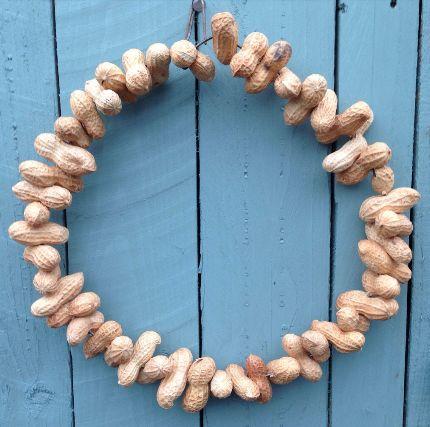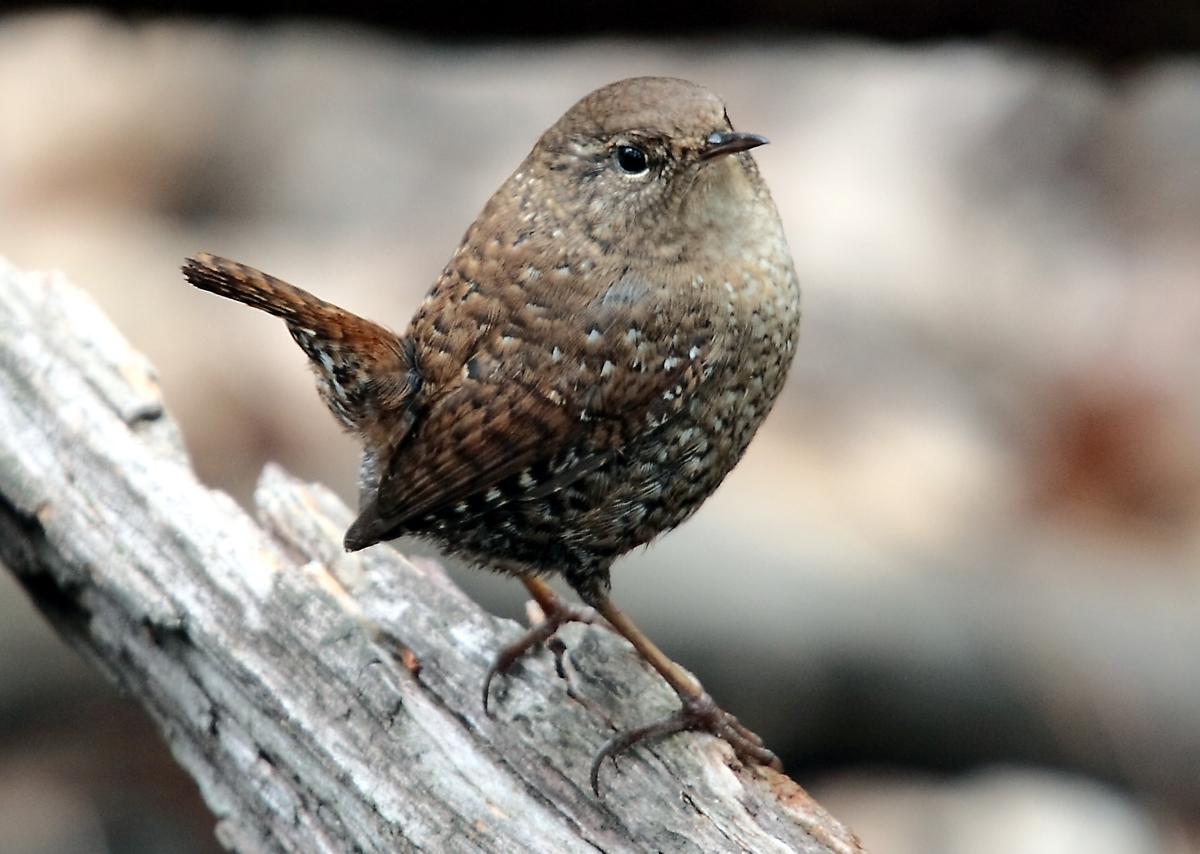Attract wrens with this bird feeder, which you can shape into a heart to make it a great Valentine’s Day project. Wrens also have a romantic story behind them, which you can tell while making the craft.

Peanut bird feeder wreath. (Courtesy of Spade Fork Spoon)
You’ll need:
-Galvanized wire (you can often find it at hardware stores)
-Wire cutters
-Pliers
-Shelled peanuts
How to Make it:
Using pliers, shape one end of your piece of wire into a loop. Thread peanuts onto the wire, then bend the wire in a circle or heart shape. Slide the other end of the wire through the loop and bend it with the pliers to hold it in place.
Working with small children, you could first make the holes in the peanut shells with an awl and let the children slide them onto the wire.
A heart-shaped peanut wreath could be a low-budget, highly-useful message to the person (or avian friends) you love.
Stories to Tell:
To accompany your DIY project here are two stories to tell about the wren, the little bird that loves peanuts, peanut butter, and his mate.

Eastern Winter Wren (Troglodytes hiemalis), Central Park Northwest, NYC, New York, USA. (Paul Stein)
Building a Nest Fit for His Queen
In German, the wren is called the “king of the hedge.” In Dutch, it is called the “little winter king.”
This gentlemanly bird has a romantic approach to building a home. He starts building multiple nests (wrens have been said to build even 10 or more) and lets his queen pick which one she likes best.
Then he will finish building that one, custom made to suit her tastes.
A Fable About How the Regal Wren Got His Name
Wrens live in many places all over the world—North America, Australia, Europe, et cetera.
The Eurasian winter wren’s kingly name dates back to the ancient Greeks. Aristotle and Plinius both told the tale of the “king of birds.”
The birds held a competition to decide who would be their king. The bird who could fly the highest would win the crown.
All birds gathered on a windless day and the competition started. The last two in the run were the swallow and white-tailed eagle. The moment the swallow gave up, the eagle screamed triumphantly and flew down—only to discover a little brown bird emerging from its feathers.
The wren had hitched a ride on the eagle, and he flew a little higher, chattering happily all the while.
When the little bird flew back down, all the birds stared angrily at the little brown ball standing with his tail pointing briskly to the sky, chest out, proclaiming himself king. They tried to pick him with their beaks for foul play and the little bird quickly took off, hiding in the bushes.
The next day however, the eagle thought better and asked the little bird if it would like to share the title; one could be king in summer, the other in winter. The little bird liked the idea and was then called “Kuningilin” (kinglet) in Old High German and winterkoninkje (little winter king) in Dutch. In modern German, the wren is called “Zaunkönig” (king of the fence, or hedge).
To this day, the wren likes to stay in the bushes and it makes a clammer in winter when most birds are silent. According to legend, it is still chattering “I am the king, I am the king, I am the king!”
*Image of child doing crafts via Shutterstock





